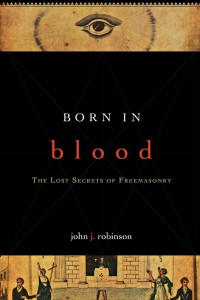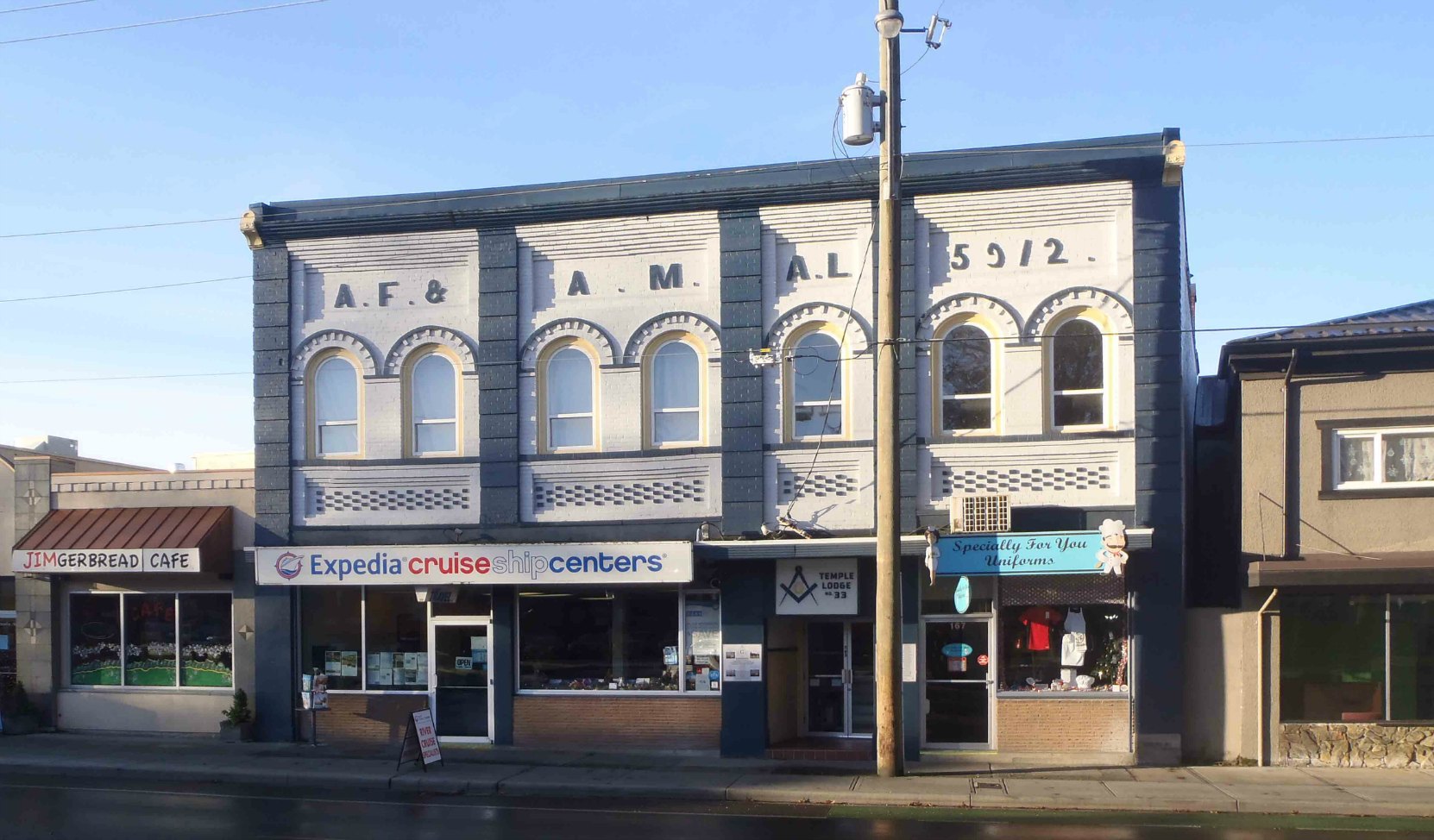Congratulations to Brother Lawrence Lampson of Temple Lodge No. 33, who has received First Place in the annual Ashlar College of Freemasonry Writing Competition.
Here is Lawrence Lampson’s winning essay:
Musings to the ‘Mth’ degree….
“The True Nature of Freemasonry”
An Essay Written by Lawrence Lampson, Temple Lodge No. 33, Duncan B.C.
October 2018
This essay is an attempt to crystallize my thoughts into a cohesive form rather than to expound upon finished concepts. As I am quite new to Masonry, I would ask the reader to forgive any inconsistencies or inaccuracies in this attempt.
I understand masonry in its essence to be a path of self-development, a path steeped in ancient rites and forms that harkens back to antiquity. There are many facets to masonry, and many associated movements. I will attempt to address three aspects of the Masonic movement, and show their relationship to what I understand to be the true nature of Masonry.
First I will address the social aspect, then the form and ritualistic presentation, and thirdly the esoteric nature of the work.
To the Social Life of Masonry:

In his book “Born in Blood” The Lost Secrets of Freemasonry, John J. Robinson points out that all historical documents to the original purpose of masonry were lost or destroyed before the year 1717. Around this time Masons began meeting more openly. They held their meetings in pubs, and may have been seen to be using any deeper purpose as an excuse for a good night of cheer. Still today it is often talked about as an old boys club, with much emphasis on eating and drinking.
No doubt there is some truth to that, however I see the social aspects of masonry to be that of nurturing, and developing of a culture of chivalry, of practicing good social form, ethics and morality. It is a place where at least once a month I get dressed up and meet with like minded men and practice being a gentleman. If this alone were the level to which a man gave himself to masonry, it would already be making the world a better place through the practice of good form and moral behavior. The form and weight given to moral striving I think would eventually deter a person who was only looking for the camaraderie of pub culture.
Through the structure, oaths and commitments to each other, Masonry formed a safe-haven, which allowed men of all faiths and religions to come together safely, in times when doing so was punishable by horrific torture and death.
Through traveling and visiting other lodges (which is strongly encouraged), horizons are broadened. A new awareness for one’s fellow man is kindled, and prejudices overcome. There is a strong sense of community building and support here. I believe that one’s community is as large as ones circle of awareness is and ones willingness to take responsibility with in it. And so Masonry by its nature sets out to form a global community able to unite people of all faiths, a community of active and striving men with the intent to make the world a better place by setting a good example.
The form and ritualistic presentation:
The Masonic experience begins as we enter the lodge room, its walls hung with the symbols and regalia of the rituals and rites that date back to the middle ages. We commit the rites and rituals to our memories, and look with great care to the geometry of our movements within the lodge. There is a somber earnestness with which this work is carried out, which could almost be religious. And yet it is not. The form and imagery and the sincerity within the Lodge room lends a sense of importance, and I believe it serves as a support to motivate and shepherd us past the perils and pitfalls of this path of self-development.
The memory work, and the “pageantry” of the rituals, brings to mind for me, the 12th century Arthurian legends of the “Knights of the Round Table” and their striving to bring about new social awareness. The table at which Arthur and his knights ruled was purposefully round so that there was no head of the table, and all who sat around it met as equals. This New form of governance and ideology is inspiring and I feel it is still valid today. I see parallels in the Masonic lodge. In the Lodge we meet ‘on the level’, meet as equals disregarding our different positions in life, and share a rotating leadership which all strive to take part in.
The spiritual or esoteric nature of Masonry:
Masonry as an esoteric path is an individual path, which means I can only comment very generally about it. Each of us is free to make out of it what he can. But the structure of rituals, and degree work, makes it hard for an inquisitive mind to ignore the lessons. It occurs to me that each of these lessons is a lesson for life, which continues to show deeper meaning as we deepen our understanding.
Most paths of spiritual development are described as ‘a journey’ to be taken step-by-step. The mysteries of Freemasonry are revealed by degrees. The Masonic movement throughout its history has been shrouded in secrecy and mystery. Out of historical necessity of self-preservation the movement developed into a brotherhood, with a complex set of passwords signs and symbols, and its rules and structures are akin to an order of monks or knights. It is nonetheless a path of self-development to be embarked upon by individual men. And as such, to the extent the individual gives himself to this path of self-improvement, the mysteries of freemasonry will come to light. It is often said one gets out of Masonry what one puts in. Perhaps these medieval forms and structures within Masonry create a support system that carries or nudges one toward a deeper striving, towards inner work.
Throughout the ages masons where thinkers; Many of the great artists, mathematicians, philosophers, and scientists, were Masons and their contributions are greatly valued still today. Masonic thinkers in the 17th and, 18th century embraced Deism, accepting the existence of a creator on the basis of reason, but rejecting the belief in a supernatural deity who interacts with mankind. They looked out into nature and saw God in the wonders nature, in the laws of nature, the hidden mathematics, the geometry and the wonders of science. Their thinking was based on reason, having become disenchanted with organized religion. They strove to remain free thinkers, developing and protecting streams of thought free of the dogma and the whims of the ruling powers of the day. Such thinking was risky, and thinkers and philosophers formed working groups and met in secret. Many of the founding Fathers of America were such Masonic thinkers, and brought these ideals into the foundations of the American constitution.
I see the nature of the Masonic Path of self-development in Wolfgang Von Eschenbach’s Grail legend Percival, which tells of the young son of a knight whose mother clothed and raised him as a peasant boy to protect him from the perils of his true destiny. Percival however is drawn to his destiny and becomes a knight. After long searching, He finds himself in an enchanted castle, where his uncle is suffering greatly under an enchanted ailment. Percival in his innocence is unprepared, and does not know to ask the question, which would unlock the spell:
“Uncle what ails you?”
“Striking in this work is the emphasis on the importance of humility, compassion, sympathy and the quest for spirituality. A major theme in Percival is Love…”
The imagery of this fairy tale describes a spiritual quest. In the Masonic degree work the candidate is also presented half dressed half shod, a poor traveler journeying to the east to find light. At the heart of the Masonic path we also find the same underlying tenets as key aspects of the work: interest in ones’ fellow man, the development of humility, compassion and the quest for enlightenment. I see a parallel also in the heart of the Temple legend where three Fellow-craft Masons attempt to get the Masters word, prematurely. One could say they are attempting to enter the grail castle, unprepared.
Conclusion
In conclusion, I have chosen three aspects of Masonry, the social, the ritualistic forms and the esoteric, and have shown their relationship to the true Nature of Masonry as I see it. The social life of masonry naturally brings out the best in men through the practicing of good form and moral behavior. Through community building and through interest in ones’ fellow man, the Masonic fraternity becomes a safe haven in which to work and develop inner self. The form and ritualistic aspects bring us out of the daily routine, and adds significance to our fragmented lives, helping to guide or shepherd us along this path. The esoteric aspects of masonry, point us to our calling, and aid us in creating a better world by example.
Citations:
Robinson, John J., “Born in Blood” The Lost Secrets of Freemasonry, M Evans and Company Inc. 1989
Barber, Katherine, The Arthurian Legends: an Illustrated Anthology, W.S.Cowell Ltd. 1979
Goghlan, Ronan, Encyclopedia of Arthurian Legends, Elements Books Ltd. 1993
Goodrich, Norma Lorre., King Arthur., Franklin Watts, 1986
Paterson, Katherine, Parcival: The Quest of the Grail Knight. Penguin Books Ltd, 1998
Wikipedia,
“ Striking in this work is the emphasis on the importance of humility, compassion, sympathy and the quest for spirituality. A major theme in Perceval is Love…” https://en.wikipedia.org/wiki/Parzival
Wikipedia, Deism https://en.wikipedia.org/wiki/Deism

Would you like to leave a comment or question about anything on this post?